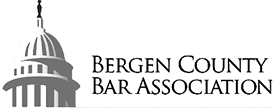Jury Operations During COVID-19 – (1) Supporting State Grand Jury; (2) Expanding Virtual Grand Jury Operations; and (3) Resuming Jury Trials
The Supreme Court has authorized various temporary modifications to jury protocols during the ongoing COVID-19 pandemic. Successful implementation of those interim adjustments is critical to resuming and maintaining comprehensive court services during Phase 2 of the Judiciary’s Post-Pandemic Plan and during the future transition to Phase 3.
(1) State Grand Jury (SGJ) (Maintenance)
As anticipated at the outset of the virtual grand jury pilot program, the Court authorized expansion to State Grand Jury (in addition to the initial county-level programs in Bergen and Mercer). The Judiciary is continuing to work closely with Attorney General staff in the Division of Criminal Justice (DCJ) to prepare the two existing State Grand Jury (SGJ) panels to convene virtually.
Technology has been distributed to the jurors on both panels as
needed. Vicinage IT staff has completed Zoom onboarding so that all jurors (those using their own devices and those using Judiciary-provided technology) are ready to proceed in the virtual format.
(2) Virtual Grand Jury Selection (Expansion)
As soon as practicable, notices will issue for new grand jury empanelments in the fall so that all counties soon will have a new grand jury. Those upcoming empanelments (selections) will be conducted virtually using video technology.
An initial quantity of tablets will be distributed to the first counties along with a spreadsheet for tracking distribution and retrieval. Additional technology will be supplied to subsequent vicinages with the amount of the allocation informed by the technology needs of the jurors in the earlier selections.
(3) Jury Trials – Virtual Selection and In-Person Proceedings (Rollout)
The Court at the July 14, 2020 Administrative Conference also authorized a comprehensive plan for resuming jury trials, starting with initial implementation in three vicinages: Atlantic/Cape May; Bergen; and Cumberland/Gloucester/Salem. The July 24, 2020 Seventh Omnibus Order provides that jury selections will resume on or after September 21, 2020. Based on that guidance, the tentative timeframe for jury selections to be conducted begins as follows:
- September 21, 2020 – Bergen
- September 28, 2020 – Atlantic
- October 5, 2020 – Cumberland
Trial selection, including the sequencing of back-up trials, will be essential to ensuring the initial trials in each county proceed successfully and jurors are utilized effectively. Vicinages should first focus on the trial of detained defendants with relatively straightforward charges.
The initial implementation will provide some information on the numbers of jurors who require technology to participate in virtual selection.
Note: New COVID-19 Jury Protocols
Vicinage staff already are preparing for the resumption of jury trials, including as to virtual selections and in-person socially distanced trials. Mock trial events involving Judiciary staff are scheduled to identify issues and become familiar with certain aspects of the process, particularly with courtroom space. Additional next steps are planned to bring everyone up to speed on the above initiatives and their role in implementation.
Cleaning of Public Use Areas in Court Facilities
Maintaining a clean work environment helps to minimize risks of exposure to the COVID-19 virus in court facilities. Although public health authorities advise that the virus primarily is transmitted person to person, there still is some possibility that the virus can survive for a time on surfaces. To mitigate against that risk, the Judiciary is continuing to work with the owners of court buildings to provide appropriate and consistent cleaning and disinfecting.
Intermittent Cleaning of Courtroom and Other Public Use Areas
Although court facilities are cleaned on a regular basis, certain areas – like counsel tables, witness stands, intake windows, interview spaces, and kiosks – may be used by multiple individuals between scheduled cleanings. Vicinages are responsible to provide cleaning and sanitizing materials, including approved wipes and non-aerosol sprays or mists (and gloves), for use as needed throughout the day. Those items should be visible and accessible to court users and replenished as necessary. Hand sanitizer and other items also should be available in courtrooms and shared areas for use by court employees and others, including attorneys, litigants, and all court users.
Court Operations During Phase 2 of the Supreme Court’s Post-Pandemic Plan
The Supreme Court’s Post-Pandemic Plan (issued June 10, 2020) outlines in general terms the transition from Phase 1 (fully remote operations) to Phase 2 (incremental return of limited numbers of judges and court staff to Judiciary facilities). This update provides further guidance on monitoring and responding to statewide and local COVID-19 trends
(1) Clarification of On-Site Presence and In-Person Events
The Court’s Post-Pandemic Plan summarizes the phases of the gradual return to court facilities and in-person services as follows:
- Phase 1: (March 18-June 21, 2020) Status Quo / Remote Operations – less than 5 % of judges and staff onsite; buildings closed to attorneys and the public
- Phase 2: (June 22, 2020) Gradual and Limited Return – starting with up to 10- 15% of judges and staff onsite; certain matters that cannot proceed remotely may be conducted onsite
- Phase 3: New Operations – ongoing remote operations with gradually increasing onsite events, eventually including new jury trials; up to 50-75% of judges and staff onsite (with staggered schedules)
- Phase 4: Ongoing Model – once a vaccine is available and/or herd immunity is established; up to 75-80% of judges and staff onsite
As stated in the Plan, the intent during Phase 2 was to start with up to 10-15% of judges and staff on-site. That percentile range already has supported the resumption of certain matters than could not proceed remotely.
Two important points require clarification. First, in addition to matters that require consent to proceed remotely, judges may determine to schedule an in-person event based on the individual facts and circumstances of a case. Except for those case types mentioned in the Court’s April 20, 2020 Order and the Plan, this should be the exception, not the rule. Plans to conduct on-site proceedings should be reviewed and approved in advance by the Presiding Judge and Assignment Judge.
Second, the percentages outlined above are a framework that should be understood based on the fluid nature of the evolving COVID-19 crisis. This means, for example, that during Phase 2 there may be a particular day when more than 10-15% of judges and staff could be on-site (e.g., staggered on-site law clerk orientation). It also means that as we transition to Phase 3 the “50-75%” guideline should be understood as a flexible ceiling, not a minimum. Court operations that can be performed remotely should be conducted remotely, subject to ongoing adjustment.
(2) Monitoring and Responding to Public Health Trends
Consistent with the June 10, 2020 Post-Pandemic Plan, the Judiciary is continuing to monitor specific COVID-19 trends, including hospitalizations, new cases, and deaths, both at the statewide and local level. Data on statewide trends is updated routinely by the New Jersey Department of Health. The New York Times and other media outlets also provide real-time graphs including county-level detail.
The Judiciary is continuing to review additional factors, including but not limited to the statewide transmission rate (which as of this memo is greater than 1.0, suggesting that the virus is not effectively contained, and spread is increasing), as well as reports of local flare-ups or new clusters of COVID-19 cases, including those arising from crowded gatherings convened in contravention of current Executive Orders. As previously noted, the Judiciary is participating in the Governor’s Coronavirus Task Force, which facilitates ongoing discussion with NJ DOH and other stakeholders regarding public health trends and responses, including determinations to increase or reduce restrictions on indoor gatherings and other social interactions. Even when the terms of an Executive Order do not directly apply to Judiciary operations, those orders and advisories affect public perception and expectation about in-person services.
In addition to staying abreast of statewide pronouncements, the Judiciary recognizes the potential for emergency declarations by individual counties. While that situation to date has not occurred, restrictions on movement within a city or municipality could have a significant effect on vicinage-level court operations. Among potential scenarios, for example, attorneys and litigants should not be directed to appear for in- person court events if doing so would conflict with a regional stay-at-home order. Beyond the immediate effect on individual cases, a municipality-wide order could prevent county-wide in-person jury selection (because excluding all potential jurors from an area would be contrary to the constitutional guarantee of a fair-cross-section of the community).
As the COVID-19 crisis evolves, the Judiciary will continue to monitor: (i) statewide and local public health trends, including but not limited to those highlighted in the June 10, 2020 Plan; (ii) state-level orders and advisories that affect in-person gatherings; and (iii) any local declarations that restrict members of any community from accessing and participating in in-person court events.
(3) Protocols for Adjusting Operations
he fluid nature of the COVID-19 public health situation requires agility and adaptability. To the extent that public health trends and other factors support a gradual transition to Phase 3 (increased on-site presence and more in-person court events), the Post-Pandemic Plan will proceed as announced on June 10, 2020. However, if those trends and factors suggest that such greater on-site presence would present untenable risks to judges, court employees, and court users, then the Judiciary would instead hold steady in Phase 2 – or, conceivably, even revert to Phase 1 (fully remote operations).
Any statewide decision to move forward, or to move back, will be made by the Chief Justice and the Administrative Director in consultation with the Assignment Judges and Trial Court Administrators. Court operations also may need to be adjusted at the county or vicinage level, possibly even on short notice (e.g., based on a flare-up or new local restrictions).
COVID-19 Updates — Streamlined Content (August 10, 2020).pdf

